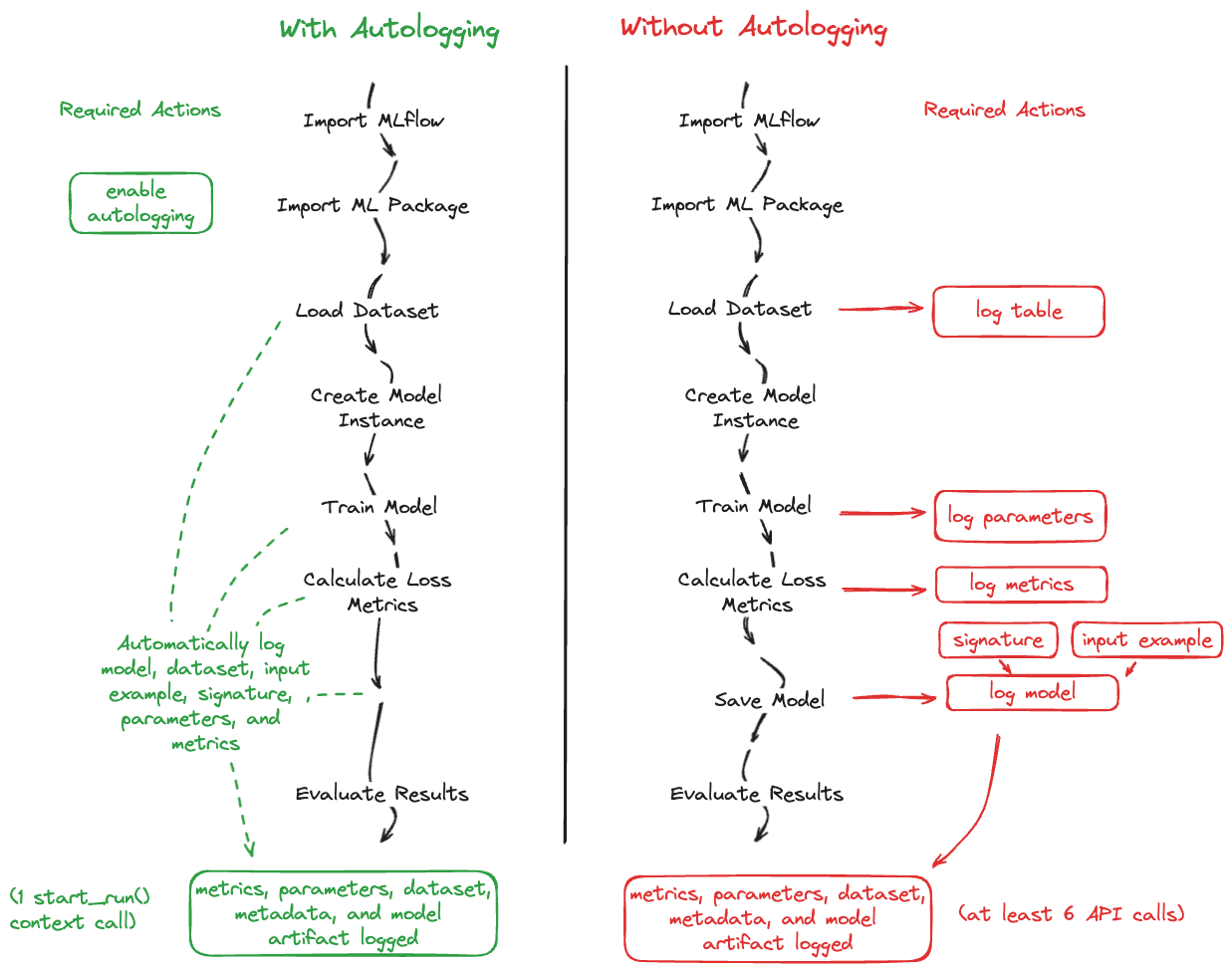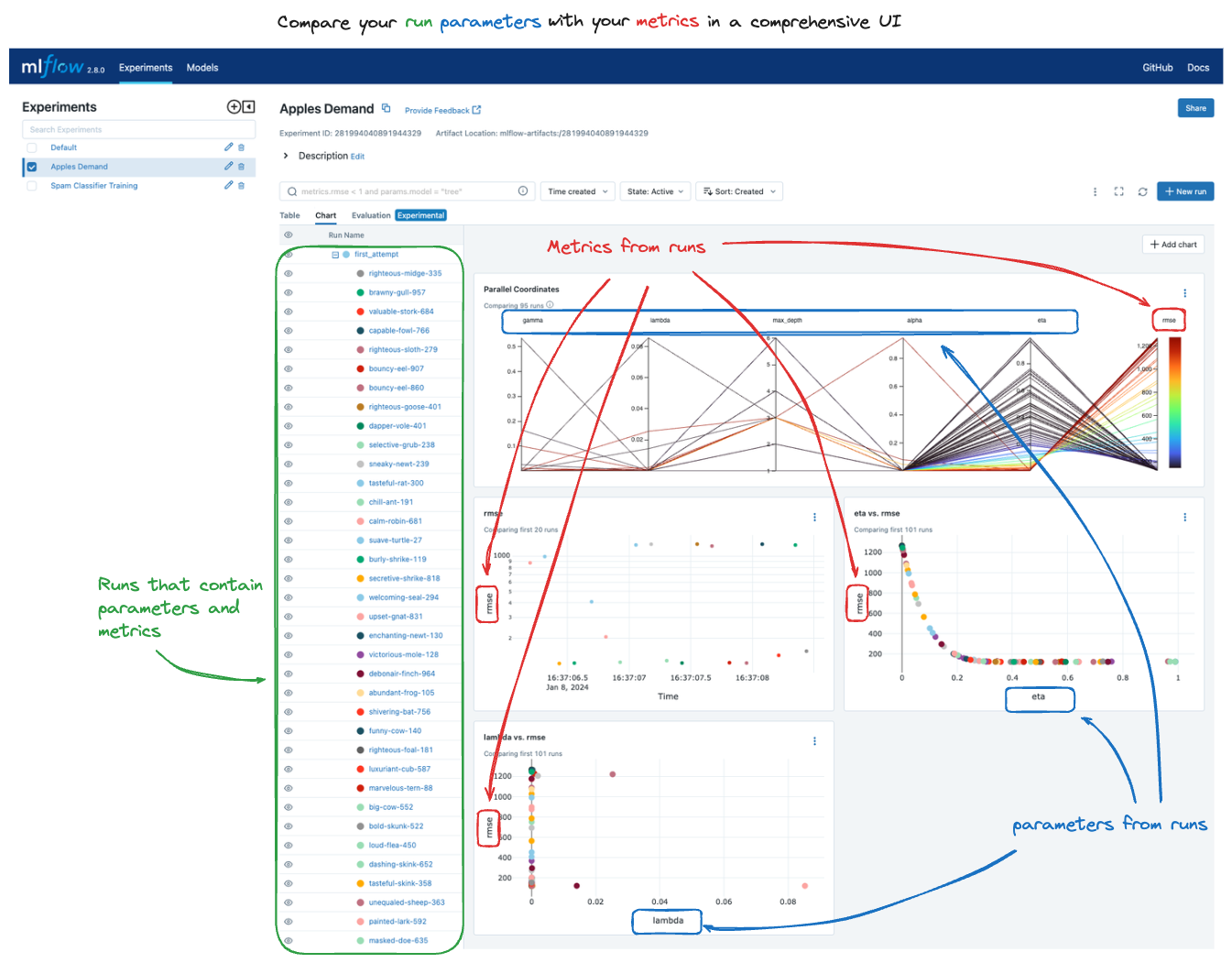Getting Started with MLflow
For those new to MLflow or seeking a refresher on its core functionalities, the quickstart tutorials here are the perfect starting point. They will guide you step-by-step through fundamental concepts, focusing purely on a task that will maximize your understanding of how to use MLflow to solve a particular task.
Guidance on Running Tutorials
If you are new to MLflow and have never interfaced with the MLflow Tracking Server, we highly encourage you to head on over to quickly read the guide below. It will help you get started as quickly as possible with tutorial content throughout the documentation.
Getting Started Guides
MLflow Tracking
MLflow Tracking is one of the primary service components of MLflow. In these guides, you will gain an understanding of what MLflow Tracking can do to enhance your MLOps related activities while building ML models.
In these introductory guides to MLflow Tracking, you will learn how to leverage MLflow to:
Log training statistics (loss, accuracy, etc.) and hyperparameters for a model
Log (save) a model for later retrieval
Register a model using the MLflow Model Registry to enable deployment
Load the model and use it for inference
In the process of learning these key concepts, you will be exposed to the MLflow Tracking APIs, the MLflow Tracking UI, and learn how to add metadata associated with a model training event to an MLflow run.
Autologging Basics
A great way to get started with MLflow is to use the autologging feature. Autologging automatically logs your model, metrics, examples, signature, and parameters with only a single line of code for many of the most popular ML libraries in the Python ecosystem.
In this brief tutorial, you’ll learn how to leverage MLflow’s autologging feature to simplify your model logging activities.
Run Comparison Basics
This quickstart tutorial focuses on the MLflow UI’s run comparison feature and provides a step-by-step walkthrough of registering the best model found from a hyperparameter tuning execution. After locally serving the registered model, a brief example of preparing a model for remote deployment by containerizing the model using Docker is covered.
Tracking Server Quickstart
This quickstart tutorial walks through different types of MLflow Tracking Servers and how to use them to log your MLflow experiments.
Learn how to log MLflow experiments with different tracking servers
Model Registry Quickstart
This quickstart tutorial walks through registering a model in the MLflow model registry and how to retrieve registered models.
Learn how to log MLflow models to the model registry
Further Learning - What’s Next?
Now that you have the essentials under your belt, below are some recommended collections of tutorial and guide content that will help to broaden your understanding of MLflow and its APIs.
Tracking - Learn more abou the MLflow tracking APIs by reading the tracking guide.
LLMs - Discover how you can leverage cutting-edge advanced LLMs to power your ML applications by reading the LLMs guide.
MLflow Deployment - Follow the comprehensive guide on model deployment to learn how to deploy your MLflow models to a variety of deployment targets.
Model Registry - Learn about the MLflow Model Registry and how it can help you manage the lifecycle of your ML models.
Deep Learning Library Integrations - From PyTorch to TensorFlow and more, learn about the integrated deep learning capabilities in MLflow by reading the deep learning guide.
Traditional ML - Learn about the traditional ML capabilities in MLflow and how they can help you manage your traditional ML workflows.

